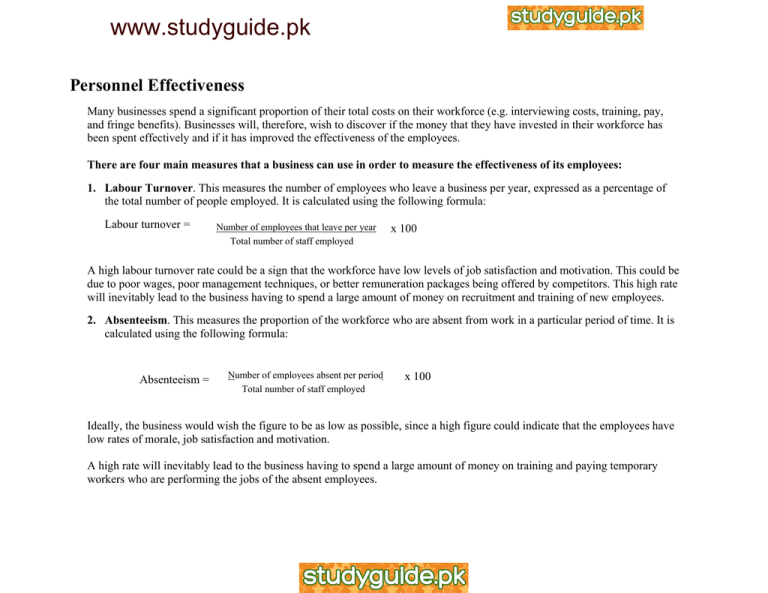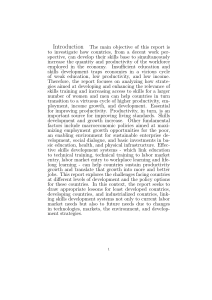www.studyguide.pk Personnel Effectiveness
advertisement

www.studyguide.pk Personnel Effectiveness Many businesses spend a significant proportion of their total costs on their workforce (e.g. interviewing costs, training, pay, and fringe benefits). Businesses will, therefore, wish to discover if the money that they have invested in their workforce has been spent effectively and if it has improved the effectiveness of the employees. There are four main measures that a business can use in order to measure the effectiveness of its employees: 1. Labour Turnover. This measures the number of employees who leave a business per year, expressed as a percentage of the total number of people employed. It is calculated using the following formula: Labour turnover = Number of employees that leave per year Total number of staff employed x 100 A high labour turnover rate could be a sign that the workforce have low levels of job satisfaction and motivation. This could be due to poor wages, poor management techniques, or better remuneration packages being offered by competitors. This high rate will inevitably lead to the business having to spend a large amount of money on recruitment and training of new employees. 2. Absenteeism. This measures the proportion of the workforce who are absent from work in a particular period of time. It is calculated using the following formula: Absenteeism = Number of employees absent per period Total number of staff employed x 100 Ideally, the business would wish the figure to be as low as possible, since a high figure could indicate that the employees have low rates of morale, job satisfaction and motivation. A high rate will inevitably lead to the business having to spend a large amount of money on training and paying temporary workers who are performing the jobs of the absent employees. www.studyguide.pk 3. Labour Productivity. This reflects the efficiency of the workforce, and it is measured by the amount of output per worker. It is calculated using the following formula: Labour Productivity = Total output Total number of workers It can be argued that labour productivity is the most important measure of employee effectiveness, since it directly affects the average cost of production and, therefore, the competitiveness of the business. An increase in labour productivity will benefit the business since it means that more output can be produced for a given amount of inputs, hence the production cost per unit will fall. 4. Waste levels. ‘Waste’ products refers to lost and damaged raw materials, poor quality output which has to be reworked, and output which has to be discarded due to its poor workmanship. It is calculated using the following formula: Quantity of material wasted Total number of staff employed If a business has a high percentage of ‘waste’ products, then this could be due to a poorly trained workforce with low levels of both motivation and job satisfaction. In this case, the business should ensure that the employees are all adequately trained for their specific tasks, and investigate any other reasons for the poor quality of the output. It is vital that the reasons for this are discovered quickly, since the effect on customer loyalty and reputation could be disastrous if the business supplies poor quality output to its customers.











